Mallina Project – Pilbara, WA (Lithium-Pegmatite)
Overview
The Mallina Project is situated approximately 80 km southwest of Port Hedland within the northern Pilbara region — a district that hosts world-class lithium deposits such as Wodgina and Pilgangoora. The project encompasses a series of under-explored greenstone and granitic terrains with known pegmatite intrusions, providing exposure to a proven lithium corridor.
Early reconnaissance has identified fertile granitic intrusions and pegmatite outcrops consistent with lithium–caesium–tantalum (LCT)-style mineralisation.
Exploration Highlights
- Satellite and aerial imagery have delineated multiple pegmatite swarms and structural trends parallel to the regional Pilgangoora–Mallina fault system.
- Field reconnaissance has confirmed coarse-grained, zoned pegmatites with accessory muscovite, tourmaline, and microcline.
- Geochemical sampling has identified lithium and pathfinder anomalies (Cs, Rb, Ta) within weathered pegmatite exposures.
- Regional assessment has highlighted similarities to the geological setting of nearby lithium deposits.
- Upcoming work will focus on systematic geochemical sampling, geophysical review, and drill-target definition.
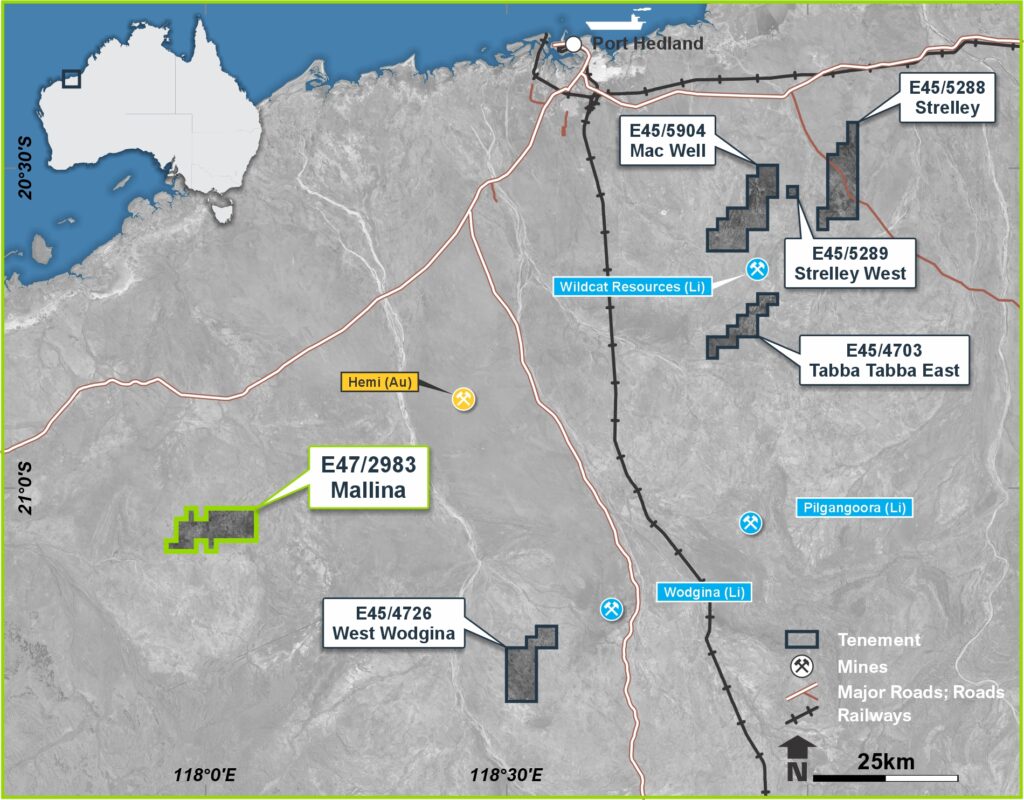
Figure 1: Location map of the Mallina Lithium Project tenement in relation to additional earn-in tenements and operating mines within the northern Pilbara, Western Australia

Figure 2: Mallina Basin

Figure 3: Spodumene-bearing dyke seen at the Mallina Lithium Project
Click here for further information and detailed exploration results in issued ASX releases.
Mt Edon Project – Mid West, WA (Rubidium-Lithium)
Overview
The Mt Edon Project is located approximately 5 km southwest of Paynes Find in Western Australia’s Mid West region. The project hosts a series of highly fractionated rare-metal pegmatites enriched in rubidium and lithium, representing one of the few documented rubidium-dominant systems in Australia.
Hydrometallurgical test work undertaken by Edith Cowan University (ECU) achieved rubidium extraction efficiencies approaching 90% under optimised roast–leach conditions, confirming a strong technical basis for further optimisation and scale-up. Morella controls 51% of the pegmatite mineral rights in joint venture with Elevra Lithium Limited (ASX: ELV, formerly Sayona Mining Limited).
Exploration Highlights
- Mapping and drilling have confirmed multiple stacked pegmatite bodies up to 80 m wide and extending over 600 m in strike.
- Drill assays returned rubidium grades up to 0.59% Rb₂O in microcline-rich zones.
- ECU test work achieved 89–90% rubidium extraction and > 92% potassium recovery under optimised conditions.
- Mineralogical studies show rubidium hosted primarily in microcline feldspar rather than mica, supporting process efficiency.
- Planned variability testing and economic assessment to support scoping-level studies in CY 2026.
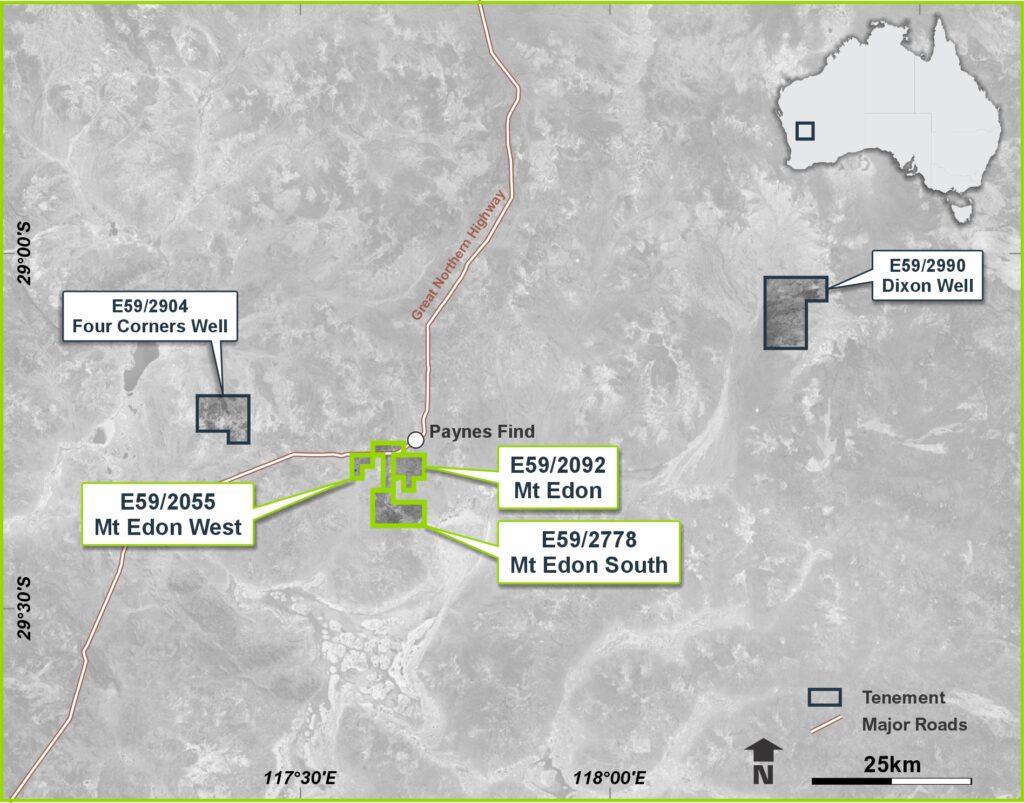
Figure 1: Location map of the Mt Edon Project
Tabba Tabba Project – Pilbara, WA (Lithium-Tantalum)
Overview
The Tabba Tabba Project lies within the Pilbara lithium province, adjacent to Wildcat Resources’ lithium development and within the broader Pilgangoora–Tabba Tabba greenstone belt. The project covers prospective structural corridors that host lithium-caesium-tantalum (LCT) pegmatites associated with fertile granitic intrusions.
Recent work by Morella has focused on surface mapping, geochemical sampling, and assessment of historical datasets to refine target areas for follow-up drilling.
Exploration Highlights
- Reconnaissance mapping and sampling have confirmed the presence of coarse-grained spodumene-bearing pegmatites across key structural corridors.
- Rock-chip assays have returned elevated lithium (Li₂O) and tantalum (Ta₂O₅) values consistent with LCT-type mineralisation.
- Detailed drone imagery and structural interpretation have identified several east–west pegmatite trends coincident with regional shears.
- Work programs completed under the Morella–Wildcat engagement have established a strong geoscientific foundation for follow-up drilling.
- Planned drilling will target subsurface extensions of known pegmatites and assess continuity toward the Pilgangoora system.
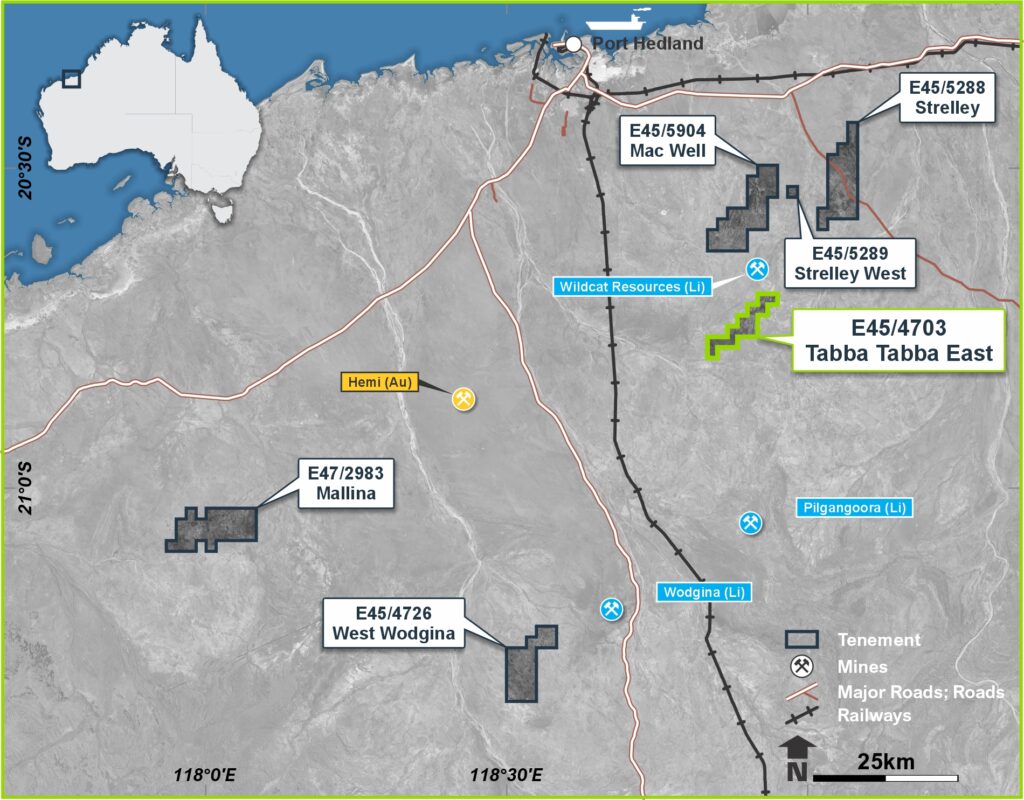
Figure 1: Location map of the Tabba Tabba East Project
Dixon Well Project – Mid West, WA (Titanium-Vanadium)
Overview
The Dixon Well Project is located in the Mid West region of Western Australia, approximately 140 km southeast of Mt Magnet.
It covers a sequence of mafic–ultramafic intrusions and associated titaniferous magnetite horizons prospective for titanium and vanadium mineralisation.
Initial reconnaissance and historical datasets indicate the presence of Fe–Ti–V-rich units within the local stratigraphy.
Exploration Highlights
- Historical rock-chip sampling recorded anomalous TiO₂ and V₂O₅ within massive magnetite lenses.
- Regional aeromagnetic data delineate a 10 km × 2 km high-intensity anomaly consistent with layered intrusives.
- Ground verification has confirmed magnetite-ilmenite-bearing outcrops suitable for metallurgical evaluation.
- Planned work includes detailed mapping, sampling, and petrological studies to assess grade continuity and processing characteristics.
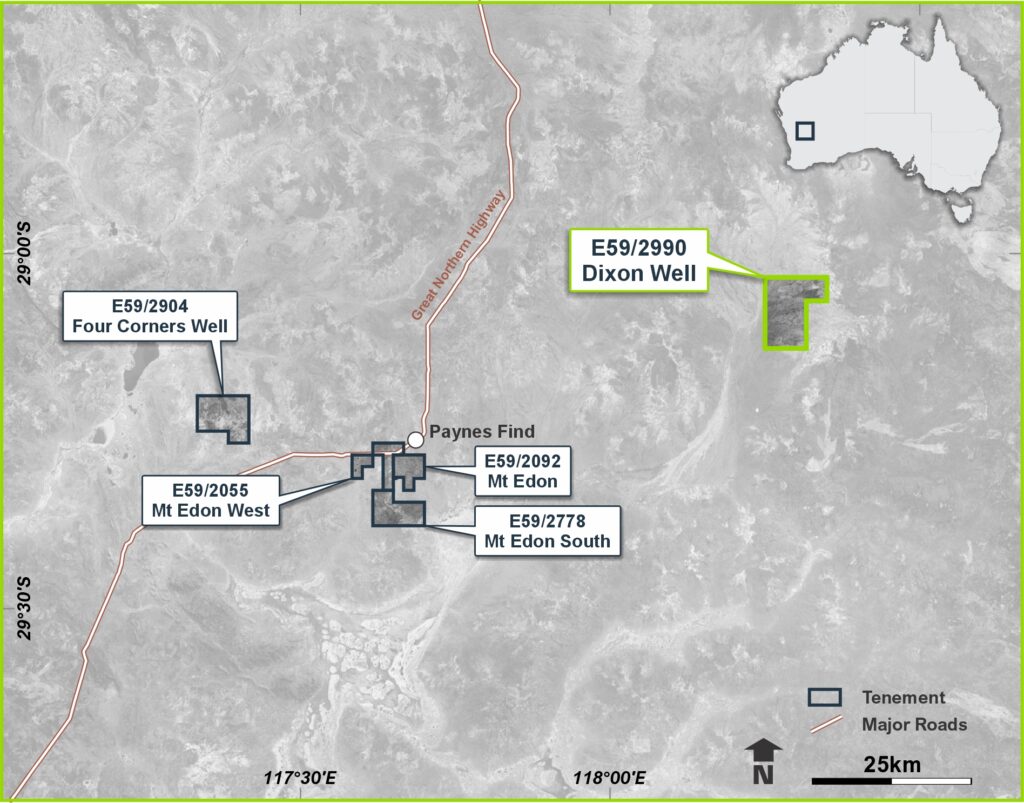
Image 1: Location map of the Dixon Well Project
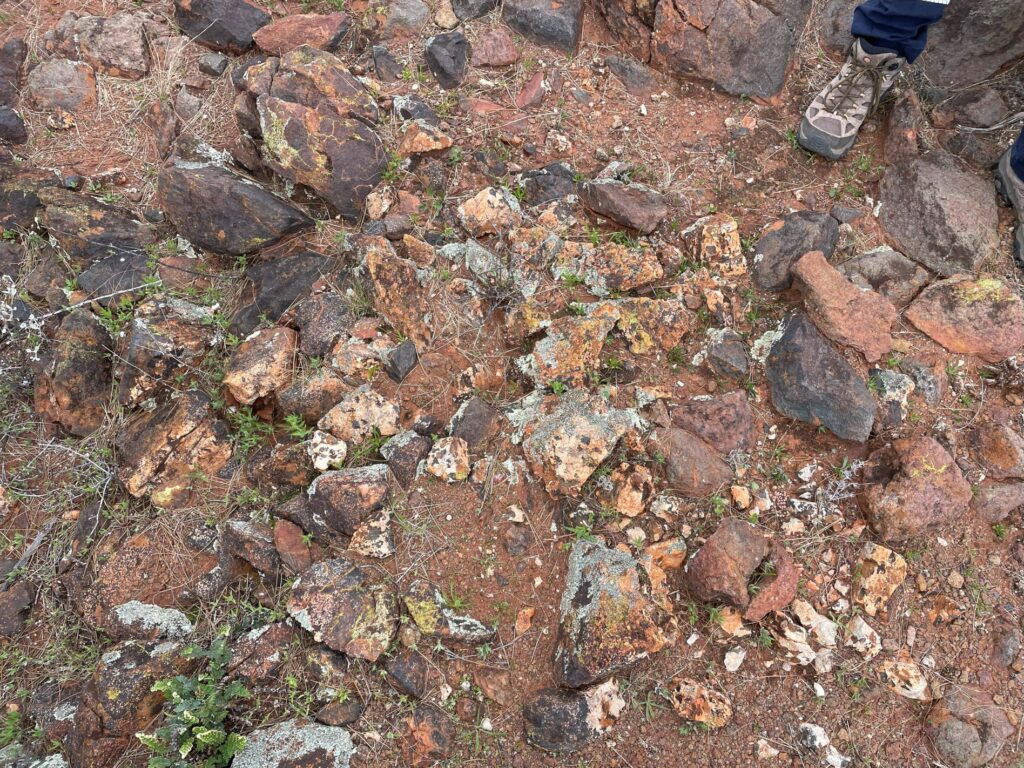
Image 2: Ilmenite bearing quartz vein
Fish Lake Valley Project – Nevada, USA (Lithium Brine)
Overview
The Fish Lake Valley (FLV) Project is located in western Nevada, within the Esmeralda lithium brine province that also hosts the nearby Silver Peak operation — North America’s only producing lithium brine mine.
The project covers an extensive area of playa sediments prospective for lithium-bearing brines and claystone mineralisation.
Fish Lake Valley provides Morella with exposure to the U.S. critical-minerals supply chain and a jurisdiction actively prioritising domestic lithium production to support battery and energy-storage industries.
Exploration Highlights
- Geophysical and geological data indicate favourable basin architecture with closed-drainage characteristics similar to the Clayton and Silver Peak systems.
- Historical sampling and brine assays have returned anomalous lithium values within surface and near-surface sediments.
- Basin modelling and structural interpretation confirm multiple depocentres with potential to host brine accumulations at depth.
- Recent data compilation and claim rationalisation have refined the exploration footprint to the most prospective zones.
- Upcoming work will include passive seismic, gravity and magnetotelluric (MT) surveys to define drill targets for brine testing.
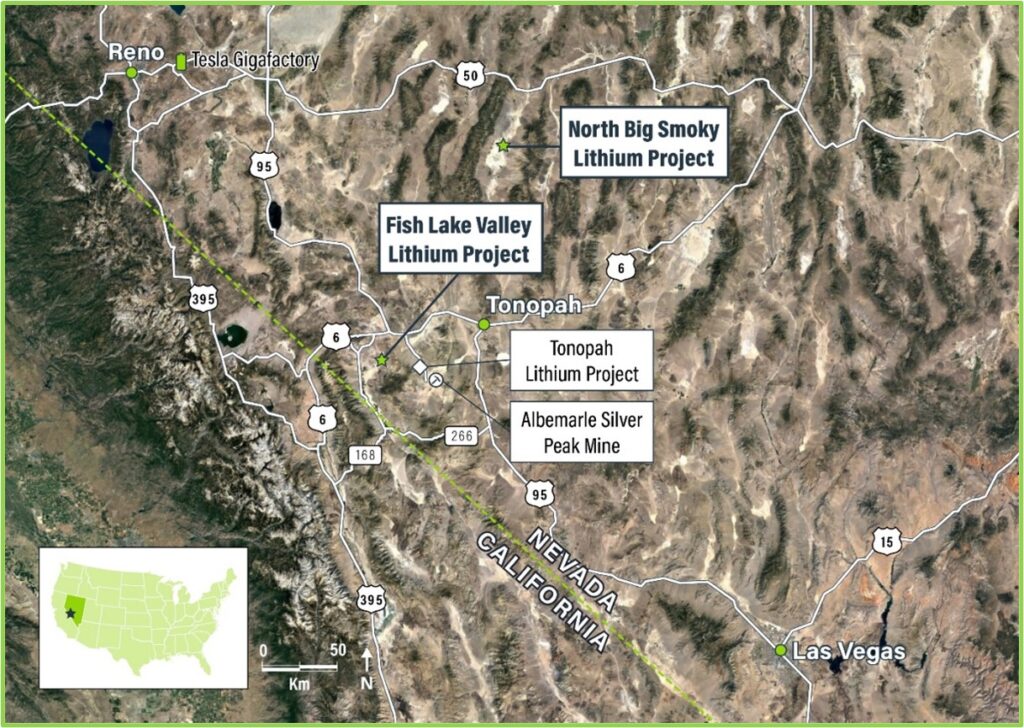
Figure 1: Location map of the Fish Lake Valley Lithium Project

Figure 2: Fish Lake Valley Lithium Project playa
Click here for further information and detailed exploration results in issued ASX releases.
North Big Smoky Project – Nevada, USA (Lithium Brine)
Overview
The North Big Smoky (NBS) Project is located in central Nevada, approximately 30 km north of Tonopah, and forms part of Morella’s strategic portfolio of lithium brine assets.
The project lies within a structural basin interpreted to host lithium-enriched brines and clay sequences analogous to those at Fish Lake Valley and other regional systems.
The NBS Project adds scale and geographic diversity to Morella’s U.S. operations and strengthens the company’s exposure to emerging domestic lithium development opportunities.
Exploration Highlights
- Basin-scale gravity and remote-sensing data define a well-developed closed basin with thick sequences of lacustrine and volcaniclastic sediments.
- Historical geochemical surveys identified elevated lithium and boron concentrations in playa surface samples.
- Satellite imagery and geomorphological analysis indicate active evaporite processes and potential for lithium concentration in brine aquifers.
- Ongoing technical studies are refining the basin model to prioritise the most favourable zones for drilling.
- Engagement with U.S. state and federal stakeholders continues to streamline permitting and ensure ESG compliance.

Figure 1: Location map of the North Big Smoky Lithium Project